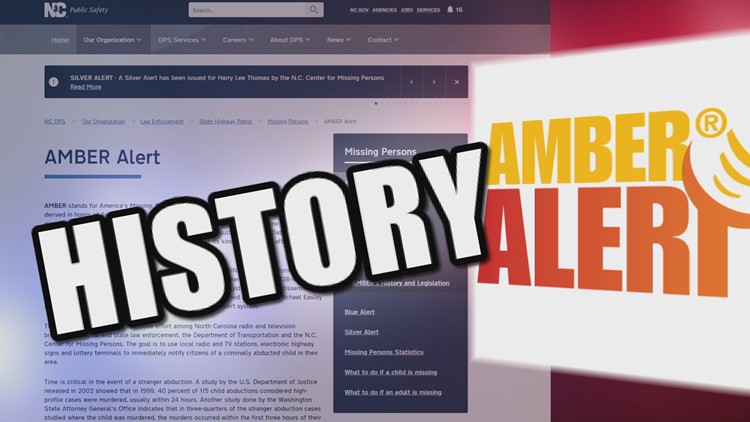After this week's AMBER Alert for 7-month-old Emma Kennedy who was ultimately found safe in Randolph County, WFMY News 2 wanted to do some digging in the history of AMBER Alerts.
What is an AMBER Alert?
AMBER stands for America's Missing: Broadcast Emergency Response. The system started in 1996 after a third-grader in Texas, Amber Hagerman, was kidnapped and killed. The acronym AMBER was created in her honor. Dallas broadcasters worked with law enforcment to create a system that would quickly get out information about missing children. Nowadays, it's a system that's used across the nation where law enforcement works with media and DOT to spread information about the missing child, the suspect and vehcile information. North Carolina issued its first AMBER Alert in August 2003 when a baby was kidnapped ruing a vehicle theft in Charlotte. The vehicle was found abandoned and the child was returned unharmed.
How frequent are they in North Carolina?
According to federal data, North Carolina typically falls in the top 10 each year for states with most frequent AMBER Alerts. The Department of Justice publishes regular reports on AMBER Alerts and where they originate. The data available now is from 2006 to 2016. In that time frame, North Carolina averaged about 10.2 AMBER Alerts every year. Some years had fewer than average and other years had more. You can visit the DOJ website for more data. The North Carolina Department of Public Safety has records for 2017 and shows there were 10 AMBER Alerts issued that year.
What criteria is needed to send an AMBER Alert out?
Not all missing persons cases meet the criteria for an AMBER Alert. The North Carolina Department of Public Safety lists certain guidelines that must be met before an AMBER Alert is issued:
- 17 years old or younger
- believed to have been abducted,
- not taken by a parent (unless the child is in danger or not allowed to be with the child)
- not believed to be a runaway or voluntarily missing
- and the abduction has been reported to and investigated by a law enforcement agency.
Local law enforcement must reach out to the state to request and AMBER Alert and it's only the North Carolina Center for Missing Persons that can issue one. The agency must have descriptive data on the child, the abductor and the abductor's vehicle or location. Sometimes it can take several hours to investigate a child abduction before an AMBER Alert is issued. Other states go by different guidelines.



